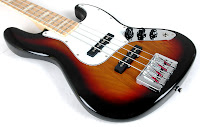The series is beautifully shot, edited and and animated by a crack team of pros at lynda.com, which is noted for their high-production value courses. Since this course grew out of the Recording Engineer's Handbook, it's gone way beyond what I ever envisioned. The animations and illustrations are fantastic, and they really help convey the concepts in an easy to understand way.
My many thanks to David Franz, the audio content manager at lynda.com, for seeing the possibilites before I ever did. Thanks to Todd Howard for being a great producer and for keeping so many things organized, and to director Ben Nilsson for capturing the essence of the sessions. The team of Bryce Poole doing the video editing, Will Frazier for the great animation, and Steven Spencer for his audio skills get my everlasting thanks. There are a lot more people at lynda that were involved and please forgive me for not mentioning you, buy you all have my sincere appreciation.
Many thanks to the musicians used throughout the course; drummer Mark Ohrenberger, bassist Paul ILL, guitar/dobro player Randy Mitchell, keyboard player extraordinaire Jeff Young, string players Robbie Anderson and Jacob Szekely, Elizabeth Franscia, Glen Berger, and Jamie Havorka on the horns, and singers Holly O'Hair and Keith England. And of course, the wonderful artist Iyeoka, who has such a great vibe that it's hard not to make great music when she's involved.
You can get a sense of what the course is all about from the following video. About 30 movies from the first four chapters will also be available for free. You can go here for a free 7 day trial to lynda.com where you can watch my Audio Mixing Bootcamp course as well.
----------------------------------
You should follow me on Twitter for daily news and updates on production and the music business.
Don't forget to check out my Music 3.0 blog for tips and tricks on navigating social media and the new music business.


